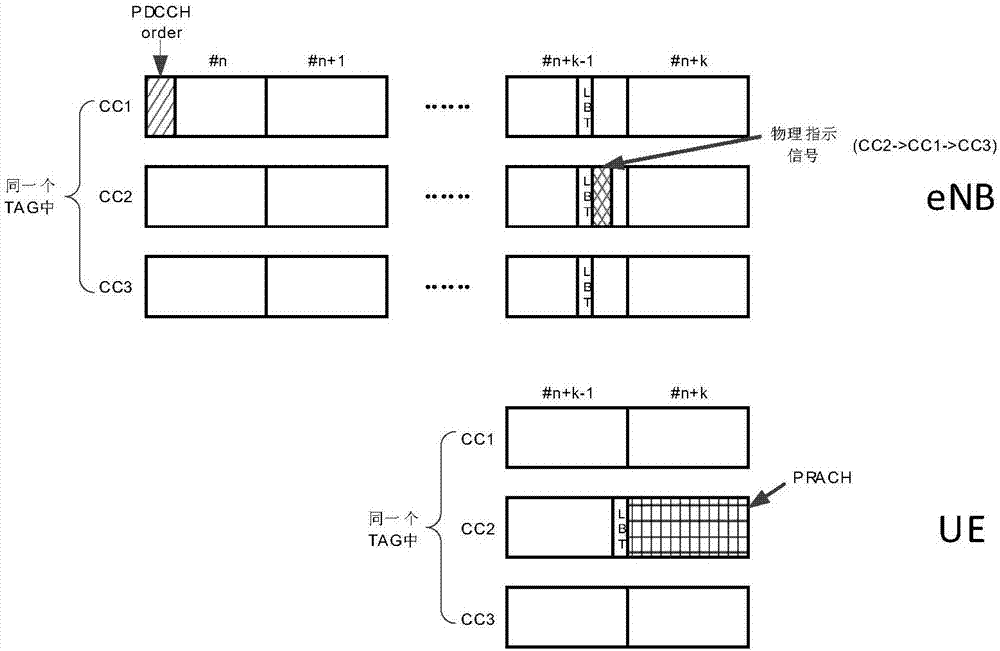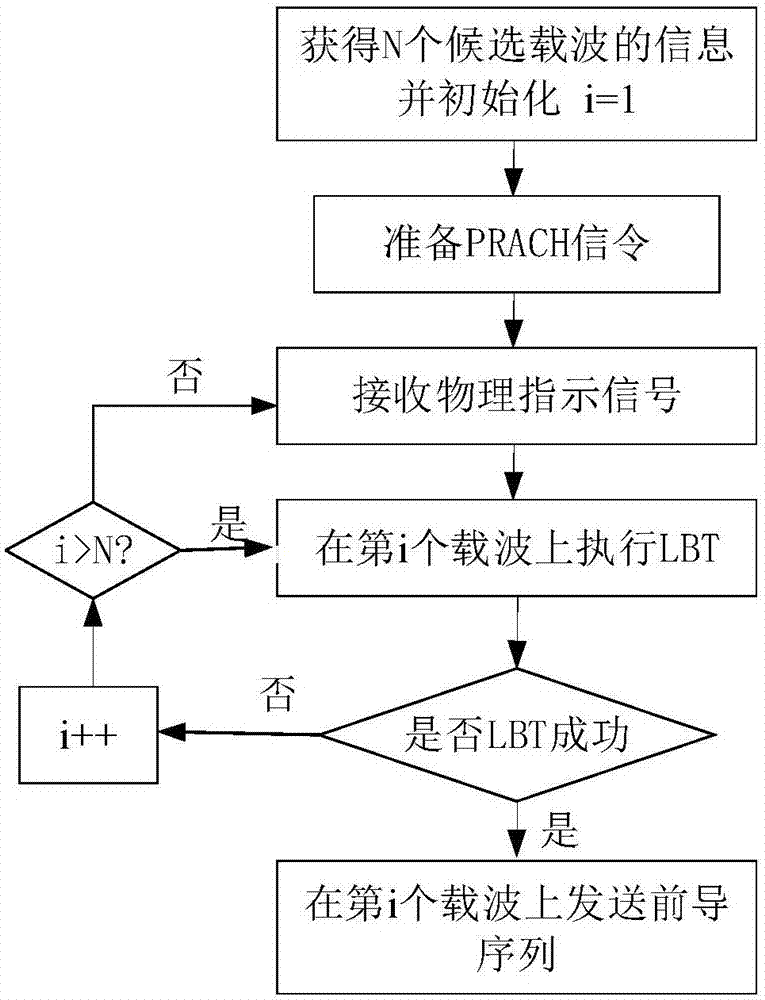Method for reducing random access delay on unauthorized spectrum
A random access and unauthorized technology, applied in electrical components, wireless communication, etc., can solve problems such as high delay and low channel access probability, so as to improve the probability of success, save power, and reduce random access delay Effect
- Summary
- Abstract
- Description
- Claims
- Application Information
AI Technical Summary
Problems solved by technology
Method used
Image
Examples
Embodiment Construction
[0016] A method for reducing the random access delay on the unlicensed frequency spectrum of the present invention will be described in detail below with reference to the drawings and embodiments.
[0017] The present invention proposes a method for reducing the random access delay on the unlicensed frequency spectrum in the LAA system. In the method, first, the base station configures multiple unlicensed Carriers are used for random access. In subframe #n, the base station sends a PDCCH order to notify the UE to perform multi-carrier random access in the LAA SCell. In subframe #n+k-1, the present invention introduces a new signaling (called a physical indication signal) for carrying channel state information of N (N≥2) carriers, specifically, the eNB LBT is performed on the N carriers, and then the channel state information of the N carriers is obtained according to the LBT results, and sorted; then a physical indication signal is sent on the carrier with the best channel st...
PUM
 Login to View More
Login to View More Abstract
Description
Claims
Application Information
 Login to View More
Login to View More - R&D
- Intellectual Property
- Life Sciences
- Materials
- Tech Scout
- Unparalleled Data Quality
- Higher Quality Content
- 60% Fewer Hallucinations
Browse by: Latest US Patents, China's latest patents, Technical Efficacy Thesaurus, Application Domain, Technology Topic, Popular Technical Reports.
© 2025 PatSnap. All rights reserved.Legal|Privacy policy|Modern Slavery Act Transparency Statement|Sitemap|About US| Contact US: help@patsnap.com



